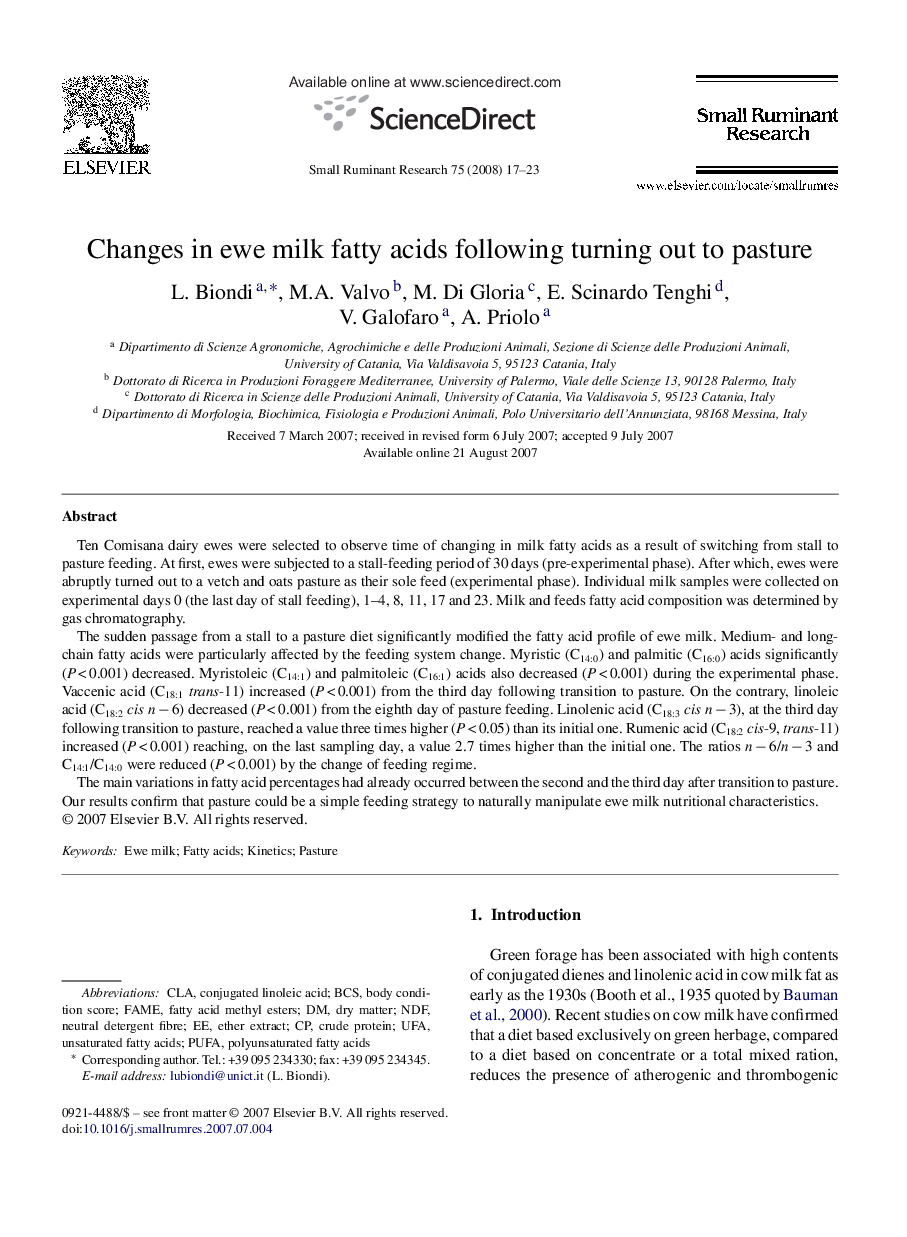| Article ID | Journal | Published Year | Pages | File Type |
|---|---|---|---|---|
| 2458108 | Small Ruminant Research | 2008 | 7 Pages |
Ten Comisana dairy ewes were selected to observe time of changing in milk fatty acids as a result of switching from stall to pasture feeding. At first, ewes were subjected to a stall-feeding period of 30 days (pre-experimental phase). After which, ewes were abruptly turned out to a vetch and oats pasture as their sole feed (experimental phase). Individual milk samples were collected on experimental days 0 (the last day of stall feeding), 1–4, 8, 11, 17 and 23. Milk and feeds fatty acid composition was determined by gas chromatography.The sudden passage from a stall to a pasture diet significantly modified the fatty acid profile of ewe milk. Medium- and long-chain fatty acids were particularly affected by the feeding system change. Myristic (C14:0) and palmitic (C16:0) acids significantly (P < 0.001) decreased. Myristoleic (C14:1) and palmitoleic (C16:1) acids also decreased (P < 0.001) during the experimental phase. Vaccenic acid (C18:1trans-11) increased (P < 0.001) from the third day following transition to pasture. On the contrary, linoleic acid (C18:2cis n − 6) decreased (P < 0.001) from the eighth day of pasture feeding. Linolenic acid (C18:3cis n − 3), at the third day following transition to pasture, reached a value three times higher (P < 0.05) than its initial one. Rumenic acid (C18:2cis-9, trans-11) increased (P < 0.001) reaching, on the last sampling day, a value 2.7 times higher than the initial one. The ratios n − 6/n − 3 and C14:1/C14:0 were reduced (P < 0.001) by the change of feeding regime.The main variations in fatty acid percentages had already occurred between the second and the third day after transition to pasture. Our results confirm that pasture could be a simple feeding strategy to naturally manipulate ewe milk nutritional characteristics.
